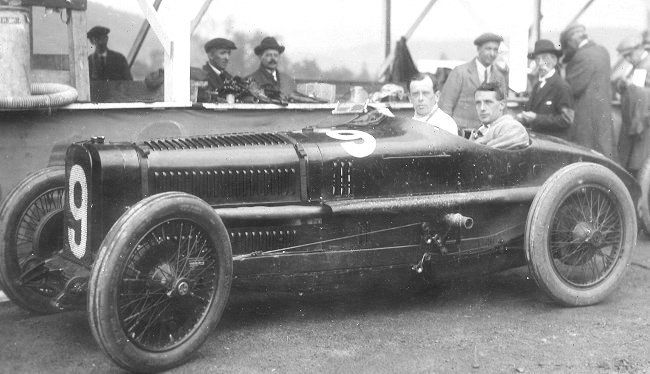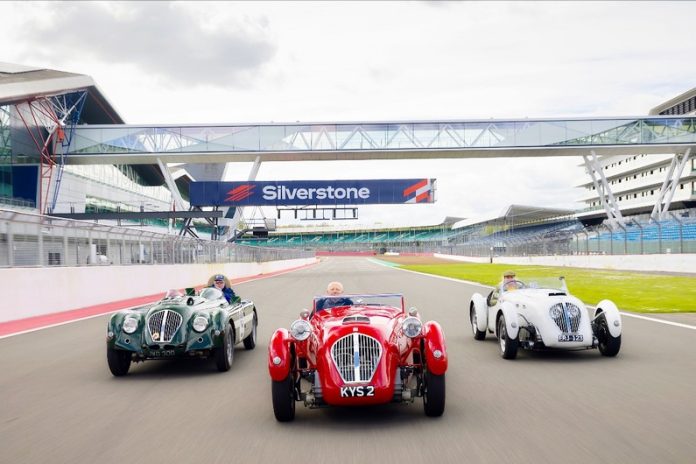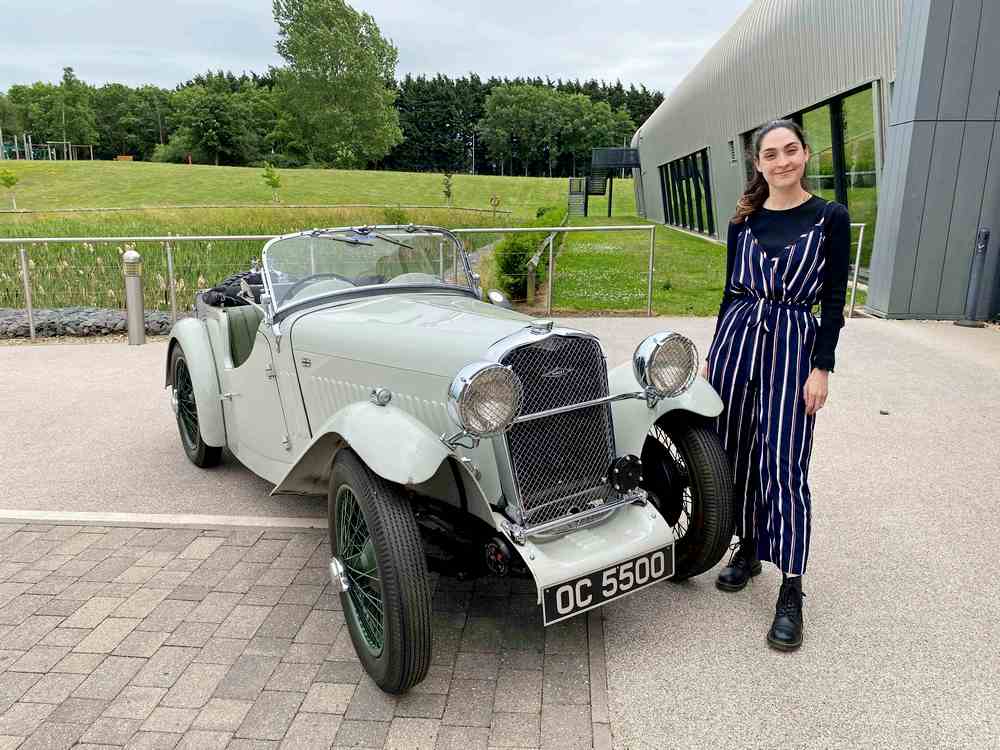Introduction
On Sunday evening 20 December 2020 I was watching ‘The Antiques Road Show'(TARS) on the BBC One TV channel. My heart beat faster when a lady started to show some photographs of a 1920s Sunbeam racing car. She revealed that she is the granddaughter of Tom Barrett who used to work for the Sunbeam Motor Car Company, Wolverhampton, in the 1920s. Although her name wasn’t given in the programme, as a result of my research, I have good reason to believe that she is Jan Jeavons**. I am indebted to her, not only for showing the photos and memorabilia on the TV programme but for allowing them to be shown on the www.historywebsite.co.uk which is where I found them and used them to illustrate this article.
The photos and other documents had been stored in a suitcase for many years and never referred to by her father. The suitcase was opened after her father died and these motoring treasures were rediscovered. In the interview of Tom Barrett’s granddaughter by the TARS expert, it was revealed that Tom had been recruited, unexpectedly, as the “riding mechanic” to accompany gentleman driver Kenelm Lee Guinness in his Sunbeam car at the 1924 Spanish Grand Prix. It was the last time that “riding mechanics” would be used in Grand Prix racing.
Before we get to Tom Barrett’s story I am going to provide an insight into the concept of “riding mechanics”. I was vaguely aware of their existence, I remember seeing them in films featuring old racing cars but I hadn’t given them much thought. How wrong that was!
Riding Mechanics
Where better to start finding out about that exceptional breed of men than in an article written by Bill Boddy for his “MotorSport” magazine in August 1986?
Here are some snippets from that article –
“The real riding-mechanics were clearly very dedicated people, to whom motor racing meant much, otherwise they would have remained on the factory floor or in other safe jobs. Occasionally, I suppose, one or two were commanded to ride beside a racing driver against their better judgement, and were not in a position to refuse, as with Fiat mechanics in 1923. But the majority were no doubt proud to be able to take such a prominent part in big races, beside drivers whom they respected and admired …..
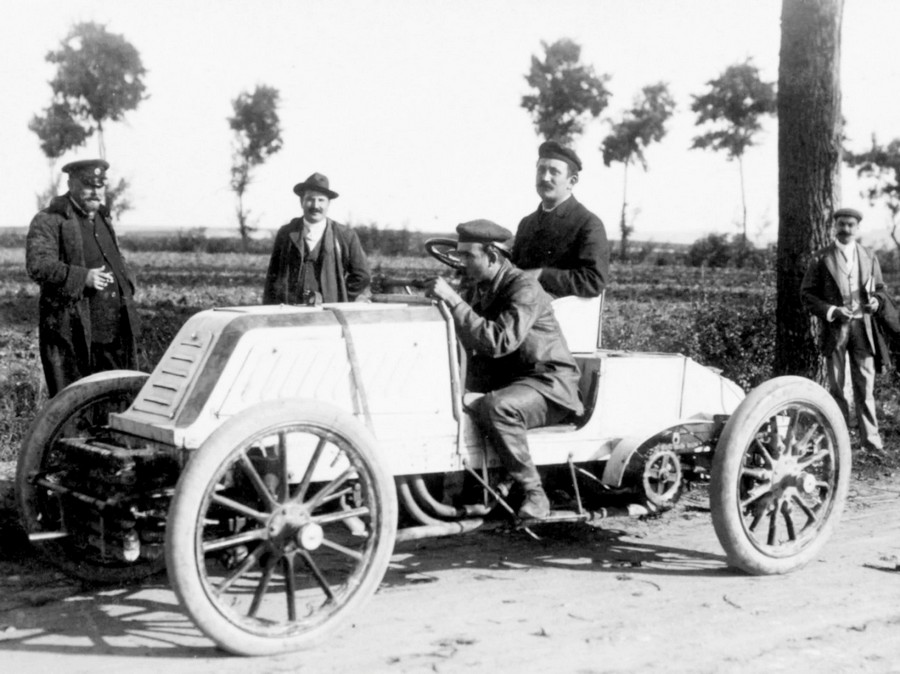
In this context, we are concerned mainly with those riding mechanics who accompanied their drivers in the great road-races. There were other brave folk who liked motor-racing sufficiently to take considerable risks riding in, or on, racing cars. One thinks in this respect of the intrepid passenger in Ernest Eldridge’s primitive aero-engined 21.7-Ittre chain-drive Fiat, when it broke the Land Speed Record on a (closed) public road for the last time in history, at over 146 mph, or when that same driver-and-car combination raced against Parry Thomas’ Leyland-Thomas in the famous Brooklands Match Race of 1925.
People used to “mechanic” at Brooklands for the fun of it, undeterred by the terrible accident that befell Lane’s Mercedes in the 1908 Montagu Cup race, when it went out of control and crashed so forcefully that its mangled chassis was found on one side of the river-Wey, its engine on the opposite bank. William Burke the mechanic being killed. But it is the mechanics who went on the great road races with whom I am mainly concerned, men who remained staunch to their drivers beyond the call of duty. In the early races they often rode, not up beside the driver, but sitting on the car’s floor, or step. Many theories have been advanced as to why this was, by those not there at the time. Was it to give the driver more room when wrestling with the steering wheel on its long unsupported column? To lower the car’s centre-of-gravity? To protect the man from the worst of the dust and flying stones? Or to get him off more quickly when a tyre had to be changed or the car refuelled? I think it was simply to enable the mechanic to keep a closer eye on the oil drip-feeds on which most early engines relied tor their lubrication than could be observed easily from a lofty seat.
So in those heroic town-to-town and early closed-circuit contests up to the outbreak of the 1914/18 war these racing mechanics rode courageously beside their drivers, helping them all they could and enduring much discomfort and danger, with little, if any, of the acclaim. The conditions they had to endure, in races often for two long days and for enormous distances, up to nearly 1.000 miles in one instance, over atrocious road surfaces cannot be visualised by those who watch racing at today’s dust-free, billiard-table circuits. They certainly had a very hard time!
In the days before WW1 many racing drivers had very little knowledge of the mechanical aspects of the cars they drove, so the presence of a knowledgeable mechanic was all the more essential. If this was less so after the war, the riding-mechanic continued to serve those he rode beside, warning of cars wanting to overtake, keeping an eye on the instruments, cleaning his master’s goggles if need be, watching for pit-signals, working the lap-scorer, and maintaining fuel pressure with the hand air-pump if a mechanical pump wasn’t fitted. Although now having the protection of a seat in the cockpit, his job was still a stern one, because the cars were lighter and faster, so that accidents were a distinct possibility, and road surfaces were often strewn with stones.
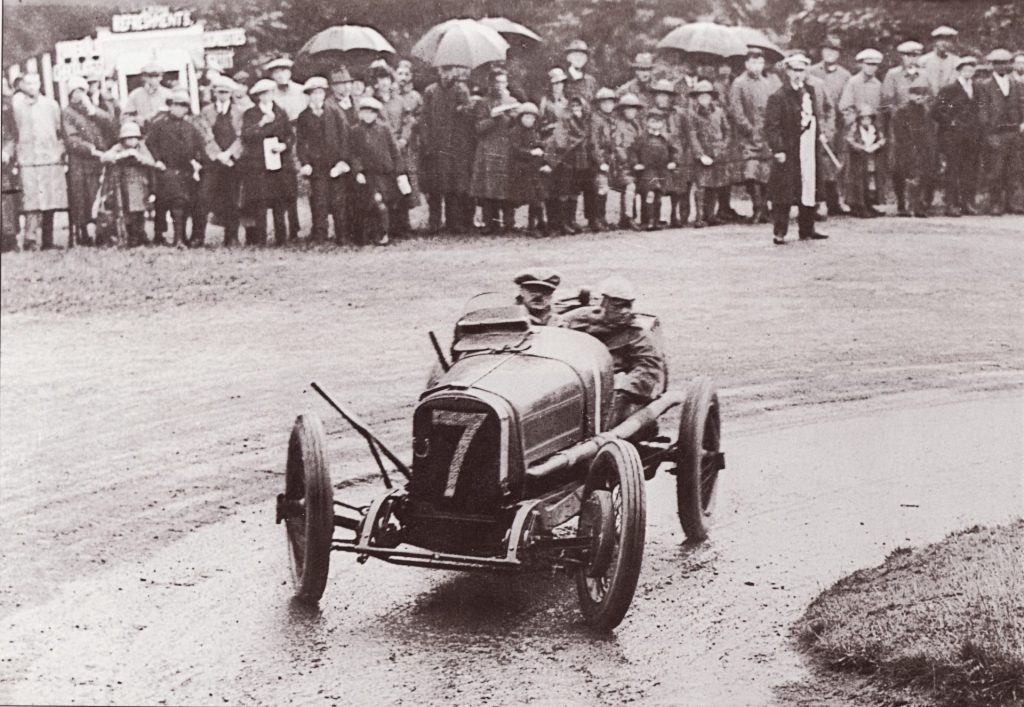
It was in the 1921 French GP that Perkins tried to reduce the clutch slip from which (Kenelm Lee) Guinness’ Sunbeam was suffering, by first passing wire round the pedal and hauling on it and, after this cut into his hand, using his tie, until the physical effort and the effect of leaning forward into the slipstream rendered him almost senseless with cramp and Guinness had to stop the car, and replace Bill Perkins with Jack Smith. . Back in 1913, at Amiens, Guyot’s riding-mechanic, Semos, jumped from the Delage at some 30 mph, thinking it had stopped and had to be driven slowly round to the pits for medical attention after Guyot had changed a tyre himself and then lifted him into the cockpit. There was a similar incident at Brooklands in a long-distance sports-car race, when the mechanic in a 30/98 Vauxhall coupe got out while it was still going quite fast, speed being difficult to judge after many laps of it. All told, it might be said that the racing mechanic’s life, like the proverbial policeman’s, was not always a happy one!
Mechanics have sometimes helped drivers in other ways, such as by changing gear on command, if the driver had suffered an injured arm — it is said that it had been De Palma’s intention to have his nephew do the gear-shifting for him throughout the 1921 Grand Prix at Le Mans and that he had had the Ballot’s gear lever moved, for this reason, to the centre of the car, only to incur the wrath of Ernest Ballot.
As for accidents, it is a moot point who was the worse off, driver or mechanic, should their car crash. The driver had the steering-wheel to hang on to, but it could crush him. Sometimes both occupants would be flung clear as when Chassagne and Dutoit went over the Brooklands banking in the Talbot-Darracq during the 1922 JCC 200 Mile Race, or when K. Lee Guinness had his accident with the Sunbeam in the 1913 GP, the car killing an innocent bystander but not its crew.
In races, short and long the mechanics had a tough time and sometimes paid the ultimate price. Yet racing-car passengers were ever willing to take the risk, like May Cunliffe’s father, who died when her 1924 GP Sunbeam rolled on Southport sands — mechanics were even carried in hill-climbs, where one would have thought weight really counted, presumably because even for such a short time fuel pressure had to be maintained, or it was believed they helped the trim of a car.
However, so far as Grand Prix racing was concerned, all that came to an end by 1925, the FIA having legislated against cars continuing to carry riding-mechanics, although bodies of two-seater-width were specified. The latter may seem illogical but the reasons are easily explained. There were fears being expressed that racing-cars had become too fast and might become still faster and even more unmanageable under the pending 1 1/2-litre ruling (valid from 1926) with a minimum weight -limit of 600 kg. One suggestion for combating this was to increase wind-resistance and it was apparent that low-drag single-seater bodies would increase, not decrease, maximum speed. It may also have been felt that entries would be lost if manufacturers had to build new monoposto chassis for the 1925 season.”
So, that is the role that Tom Barrett was thrust into for the 1924 Spanish Grand Prix held at San Sebastien. But before we look at the details of that fateful introduction, let’s have a look at the company he was working for –
The Sunbeam Motor Car Company –
Sunbeam was founded by John Marston (1836 – 1918). Marston was a businessman who had created a very successful japanware company (Japanware – a special and specific type of metal finishing popular in the 19th Century) in the late 1800s. He then started to produce bicycles and encouraged by his wife, Ellen, he branded them ‘Sunbeam’. Like many bicycle manufactures at the time (Hillman, Humber, Rover, Singer etc.) Marston and his right-hand man, Thomas Cureton, started making cars in 1901. The Sunbeam Motor Car Company Ltd. was formed, as a separate entity to Marston’s other businesses, in 1905. In 1909 the renowned French automotive engineer, Louis Coatalen, joined Sunbeam, having left the partnership he had formed with William Hillman based in Coventry. Coatalen was keen on motorsport and greatly influenced Sunbeams success in this field.
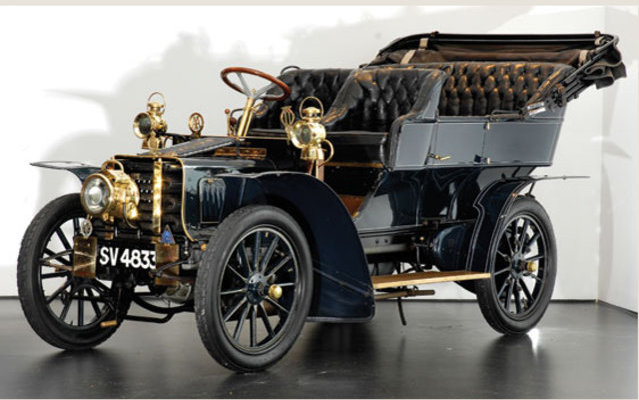
By 1911 the Sunbeam Motor Car company was building about 650 cars per year making them a major manufacturer in the UK. In 1920 Sunbeam merged with the French company Automobiles Darracq S.A. creating Sunbeam-Talbot-Darracq, or STD Motors. Racing cars were transferred to STD, and were campaigned under the different brands depending on marketing needs. Under the guidance of Louis Coatalen, a Sunbeam was the first British car to win a Grand Prix race, and it also set a number of land speed records. On 29th March 1927 the mammoth Sunbeam 1000HP car, named ‘Mystery’, nicknamed ‘The Slug’, powered by two 450 hp (340 kW) Matabele engines captured the Land Speed record at 203.792 mph (327.971 km/h). Making the City of Wolverhampton world-famous.
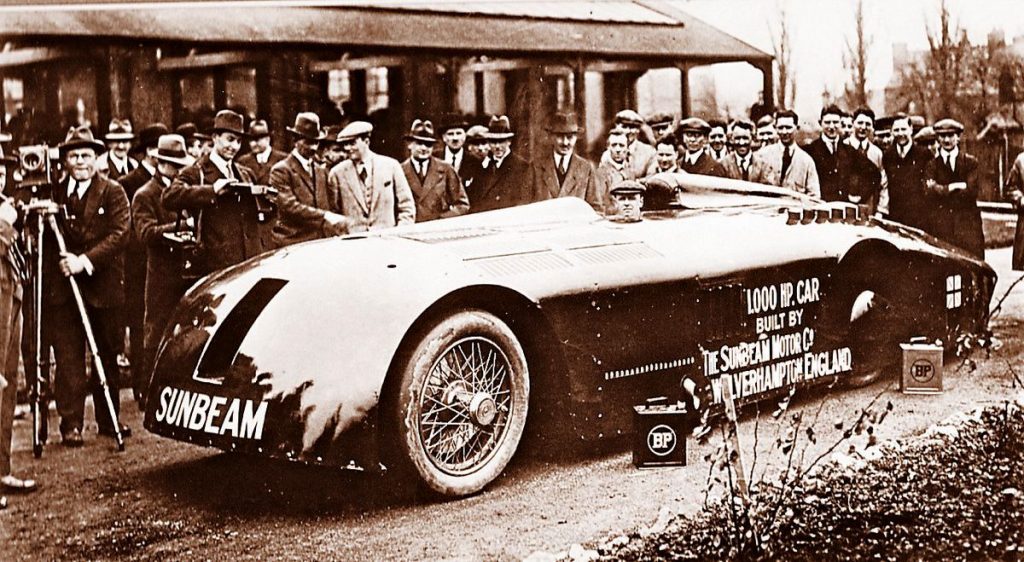
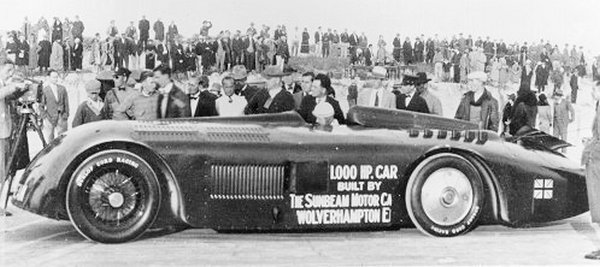
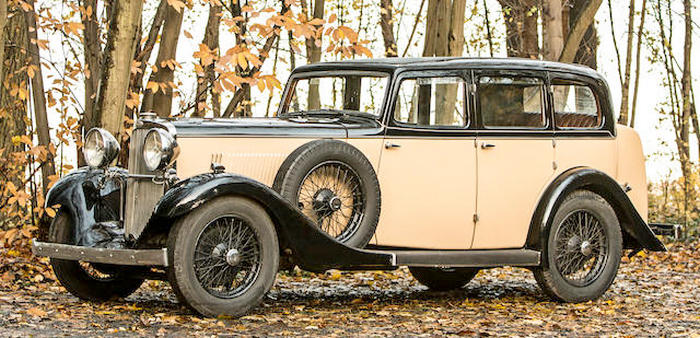
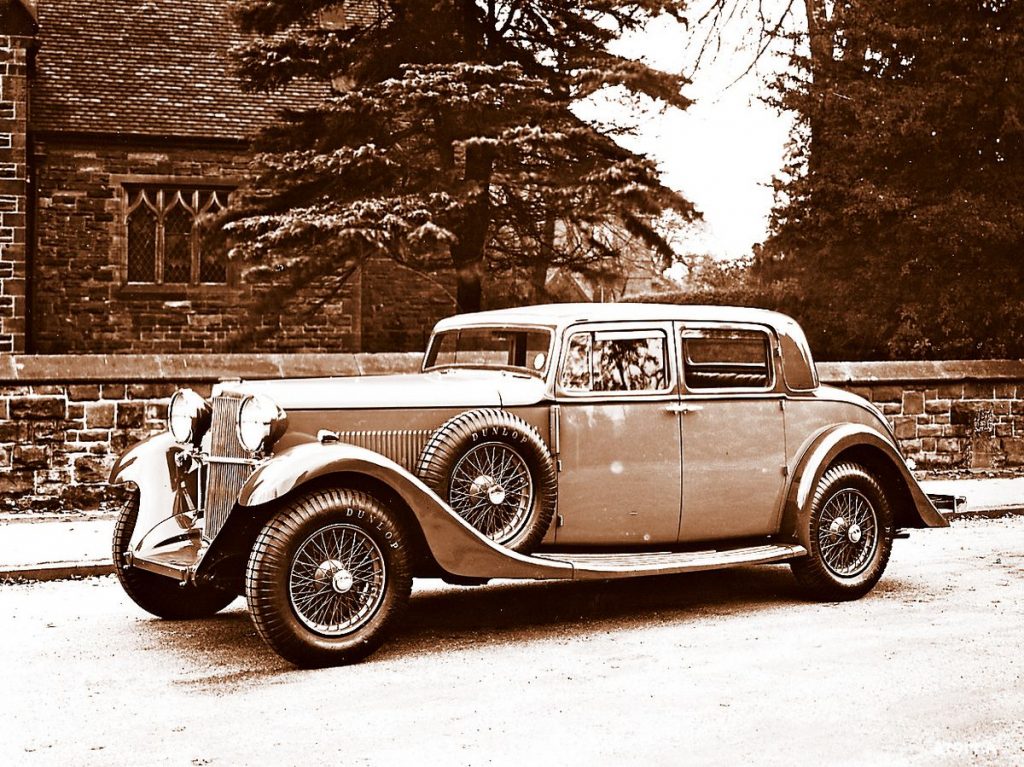
Despite these success and Sunbeams reputation for building quality cars, the company got into financial difficulties in the mid-1930s and went into liquidation. The assets were purchased, from the liquidators, by Rootes Securities in 1936. Sunbeam was added to the Rootes Group’s range of famous British car manufacturers. The difference between Sunbeam and Hillman, Humber and Singer, the other members of the Rootes Group, was that Sunbeam cars did not continue to be manufactured. Sunbeam became a “brand name” only. Nevertheless, that name was put to good use and it was worn proudly by some very successful rally cars, not least being the 1981 World Rally Championship winning Talbot Sunbeam Lotus.
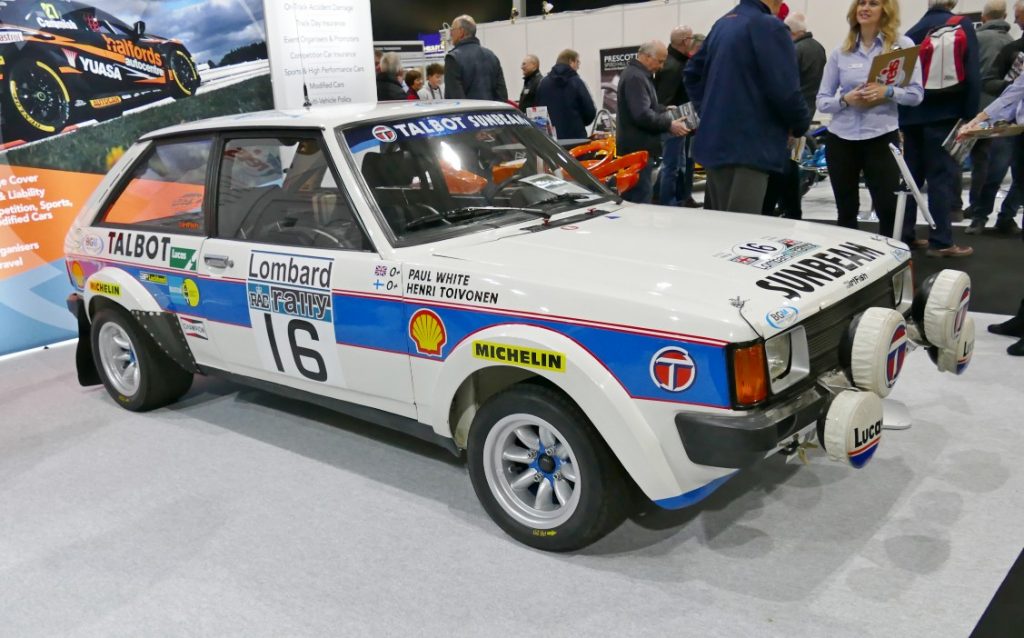
Thomas ‘Tom’ Barrett
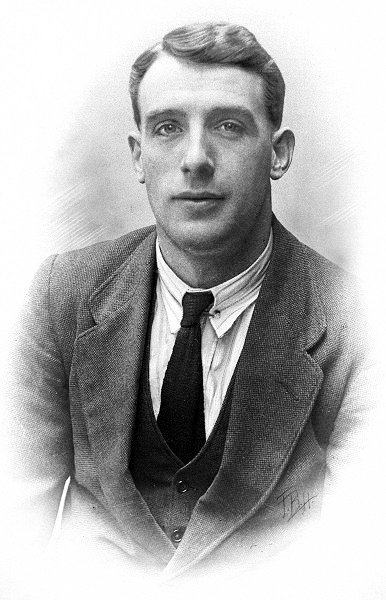
As I said at the beginning, until I saw Tom’s granddaughter present her photographs of him and the GP Sunbeam, on the Antiques Roadshow TV programme, I knew nothing of him and very little of the role fulfilled by “riding mechanics”. My imagination was stimulated and I had to find out more. I have already acknowledged Bill Body’s ‘MotorSport’ contribution and now I want to acknowledge the Wolverhampton History & Heritage Website‘s contribution in telling the stories of the Sunbeam Motor Car Company and in particular, of Tom Barrett. Much of what follows is based upon an article written by Bev Parker for the WH&H website, using information, documents and photographs supplied by **Jan Jeavons, Tom’s granddaughter.
Tom Barrett was born in 1891 at the families home in Prestwood Road, Heath Town, Wolverhampton. He served an apprenticeship with Joseph Evans & Sons Ltd., a world renowned manufacturer of a wide range of hydraulic pumps. They were based in Woden Road, Heath Town, where the Barrett family lived. He then moved to Guy Motors working on aircraft engines during the 1914 – 18 War. This was considered essential war work, therefore, he was not called to serve in the armed forces. After the war Guy lost its contract with the Government to supply aero engines, so, Tom took his skills to the other Wolverhampton company that produced aircraft engines – Sunbeam. He worked on engines destined for the new form of transport – Airships but after a number of disasters, Airships fell out of favour which, in turn, meant that there was no longer a market for Sunbeam engines. As a result, Tom moved into Sunbeam’s Experimental Department where his expertise with engines would be most welcome. He was now a mechanic, working on the company’s successful racing cars.
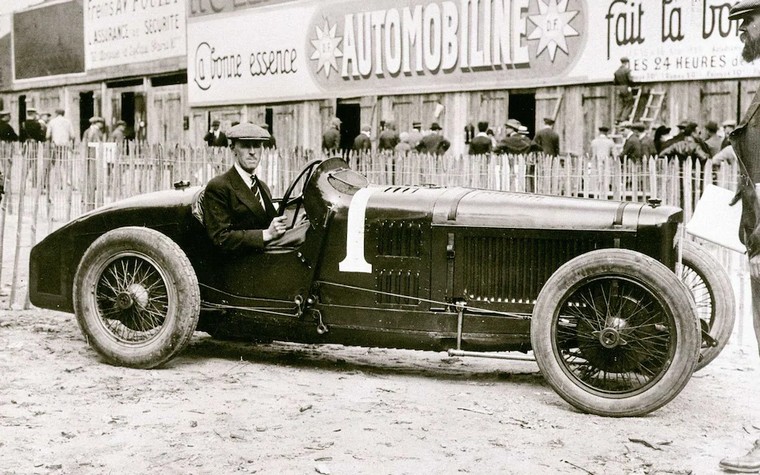
Not a lot is known about Tom’s time in the Experimental Department, until the tragic circumstances that would soon lead to his untimely death. On September 2nd, 1924, Dario Resta and mechanic Bill Perkins competed for Sunbeam in the International Class ‘E’ Records meeting at Brooklands, with a 6-cylinder Grand Prix car. Things went badly wrong during the race when a tyre came off the wheel rim and Resta lost control of the car. Unfortunately, Resta was instantly killed and Perkins badly injured. Bill Perkins was the usual, most experienced, “riding mechanic” so replacing him for the next race, the 1924 Spanish Grand Prix at Lasarte, San Sebastian, on September 27th was going to be something of a challenge.
Two of the company’s drivers, Henry Segrave and Kenelm Lee Guinness were listed to take part in the race along with their mechanics. Bill Perkins should have joined the team as Guinness’s mechanic, but he was still in hospital recovering from the injuries that he received in the Brooklands crash. A replacement mechanic was required, Tom was nominated and agreed to step into Perkins’ place. Tom’s wife Lillian often told how he went to Spain as Segrave’s mechanic, the other mechanic, Luigi Marocchi from Italy, being assigned to Guinness. The latter, being the senior of the two Sunbeam drivers, suggested that as Marocchi’s English was not good and he couldn’t speak Italian, he would prefer Barrett to be his mechanic. Segrave agreed to Guinness’s request as he could speak a little Italian so took Marocchi instead.
In a letter written to his mother and brother on the day before the race (Friday 26th September), Tom said that he was working long hours on the car. It had taken 5 days to get the car and spares to the course, and during that time he had to stay with the car and keep an eye on it at all times. He also mentioned that he was looking forward to returning home.
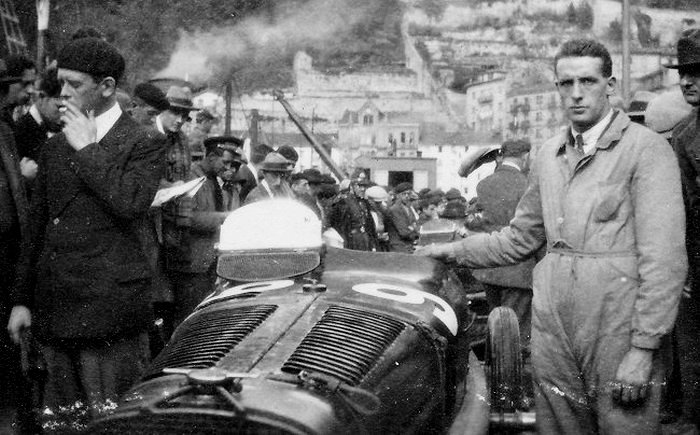
Segrave mentioned in an article in the “Autocar” magazine that there had been a great deal of rain before the race. There were lots of curves to negotiate, and the slippery road surface made the course very dangerous indeed. It was decided that sand had to be scattered onto the road to improve adhesion. Unfortunately, there was no sand available from local sources so clay was taken from the surrounding fields, as a substitute. Instead of improving adhesion, the clay made matters worse, it converted the track into a very dangerous slippery course, with, as far as Tom Barrett is concerned, fatal consequences.
On the day of the race all went well until the 11th lap. The road surface was still slippery, and Guinness’s speeding car hit a rut in the road, causing him to lose control. The car left the road at Urnieta, spun, went up the opposite bank, rolled over, then crossed the road again before coming to rest. Guinness was thrown clear, across a steep railway cutting, his momentum was arrested by impact with telegraph wires, otherwise, he would have probably lost his life too. As it was he suffered serious head and limb injuries and never raced again. His health, especially his mental health, never recovered from that accident and in 1937 he took his own life. Tom was also thrown from the car but his momentum was not arrested by telegraph wires, he slammed into the bank with great force and died instantly. He was 32 years of age.
Because of this and earlier accidents, the rules regarding mechanics riding in cars were changed. They would no longer ride in the car with the driver. It could be said that Tom’s untimely death saved the lives and limbs of many “riding mechanics”, thereby greatly reducing the number of injuries sustained in this, at the time, most dangerous of sports.
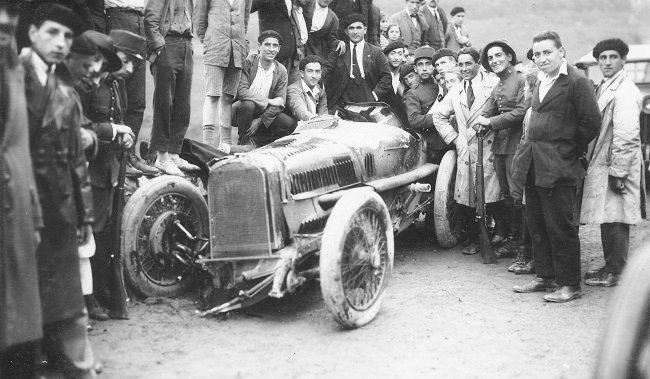
“Riding Mechanics”, the unsung heroes of the early years of Grand Prix motor racing; now I know and through this article, if you didn’t before, so do you. It’s been a privilege to research this group of men and Tom Barrett in particular.
Another snippet – Something else that I discovered as a result of researching this article; Kenelm Lee Guinness (KLG), scion of the Guinness brewing family, invented a superior type of spark plug in the early days of motor racing. He gave it the name KLG, a brand of spark plugs that I and perhaps many readers are familiar with. The brand and manufacturing process was purchased by the British automotive component supplier, Smiths Industries, in 1919.
Nick
© carsceneinternational.com


